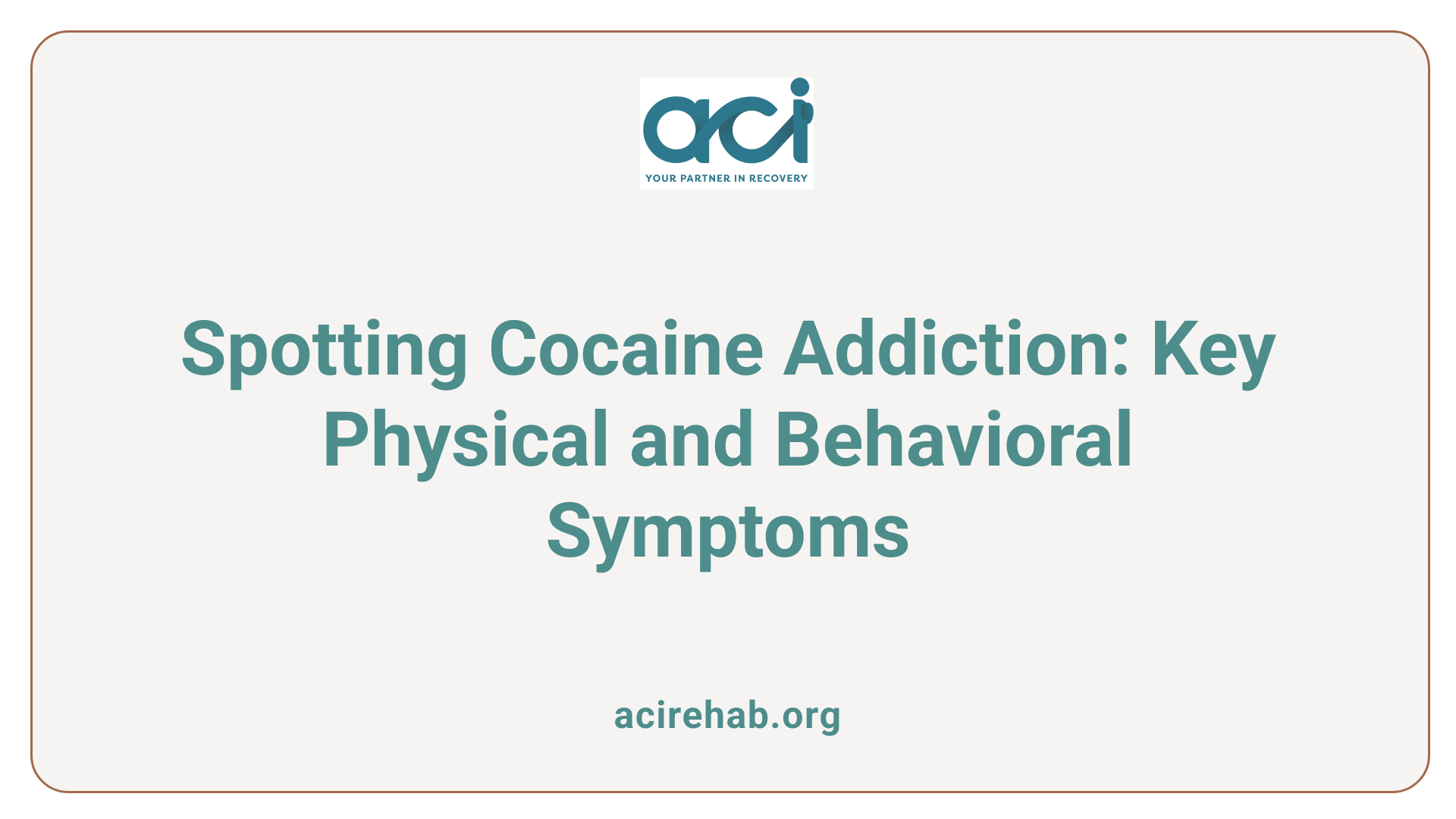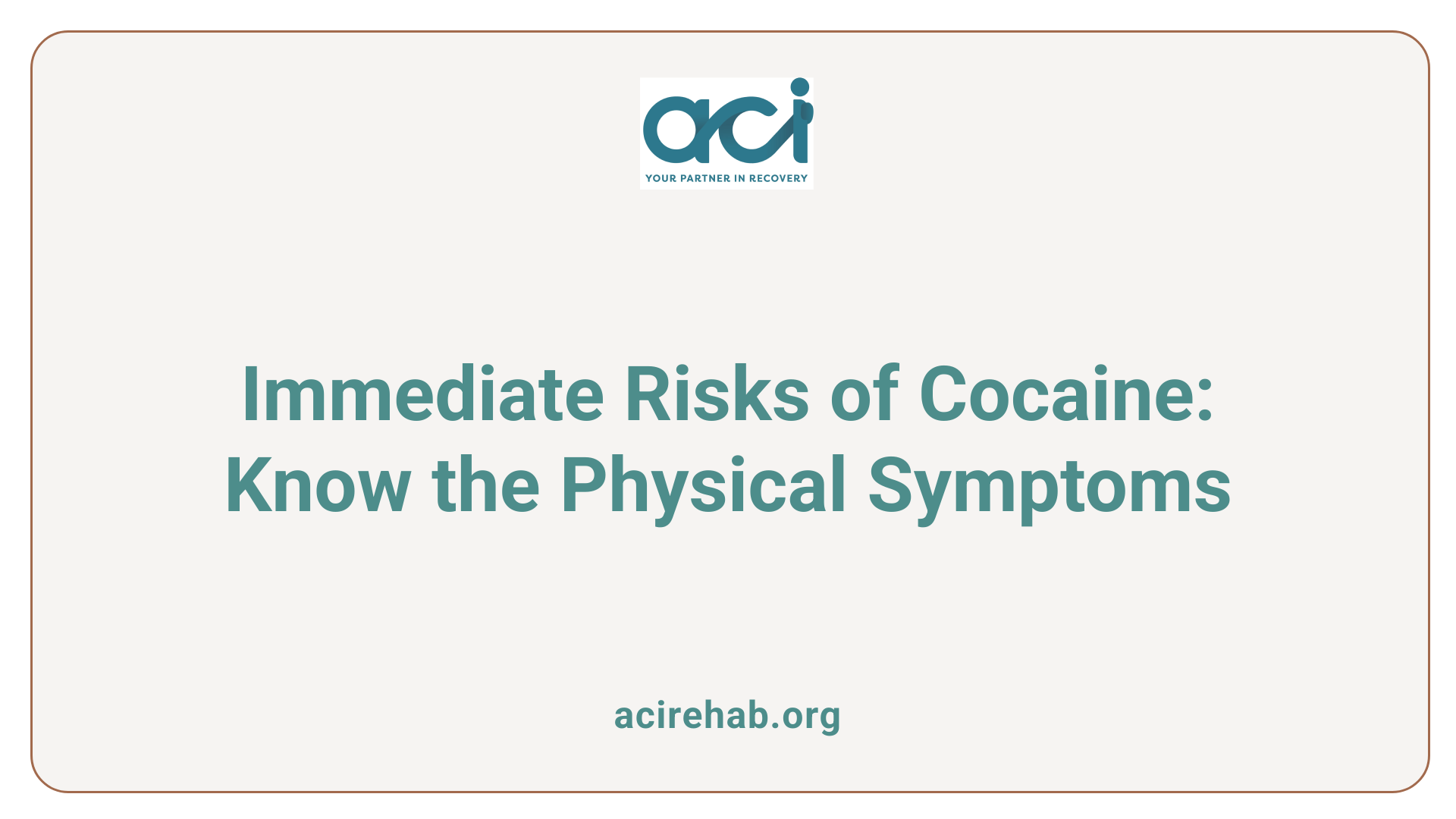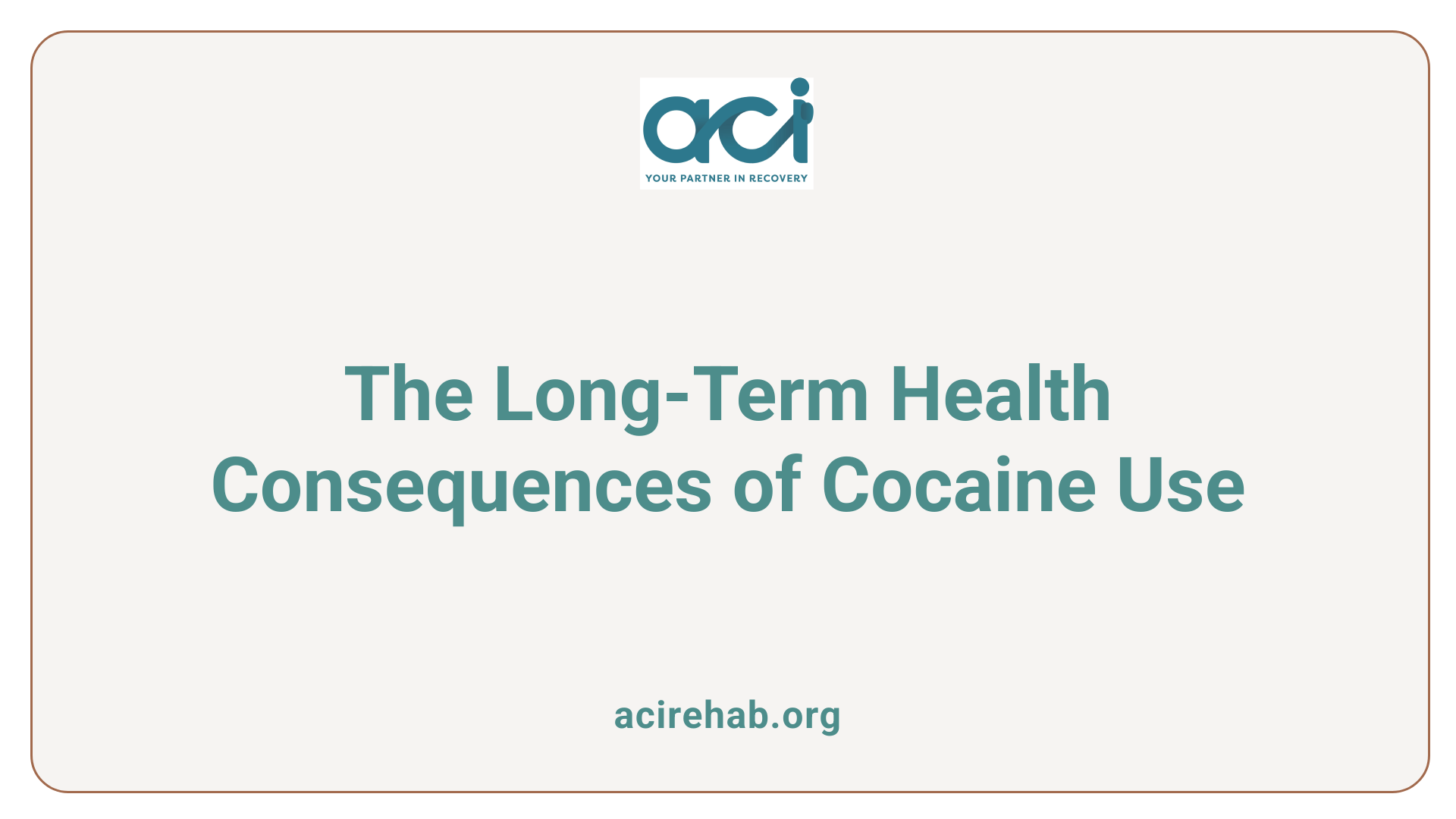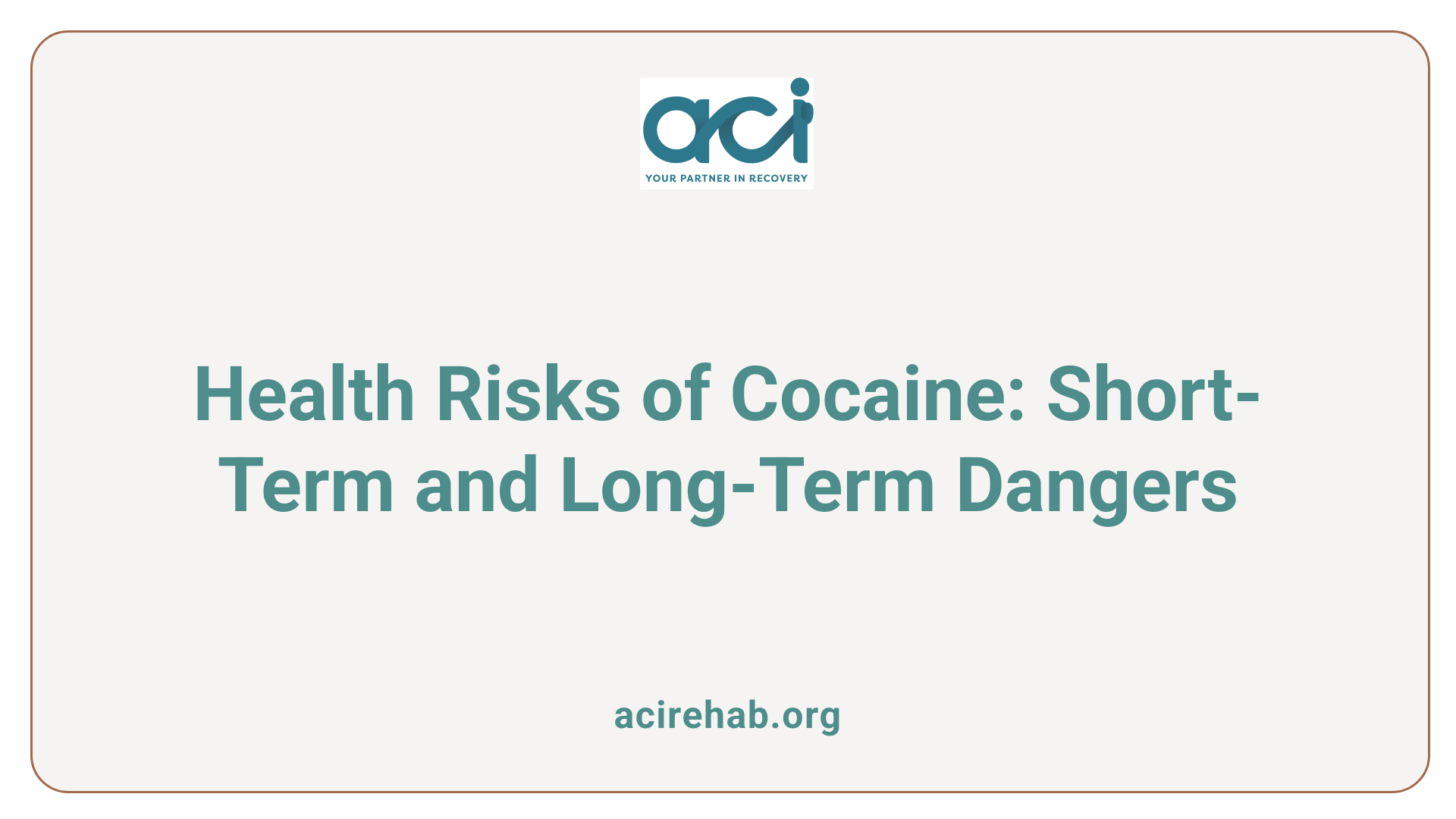Introduction to Cocaine Addiction Symptoms
Cocaine, a powerful and addictive stimulant drug, significantly impacts both physical and mental health, leading to challenging symptoms that mark dependency. Recognizing the physical signs of cocaine addiction is critical for early intervention and support. This article delves into these physical manifestations, highlighting both short-term effects and long-term health risks, while offering guidance on recognizing and responding to addiction.
Recognizing the Physical Signs of Cocaine Addiction

How can one recognize signs of cocaine addiction in themselves or others?
Recognizing signs of cocaine addiction in oneself or others can involve observing both physical and behavioral changes.
Physical Symptoms of Cocaine Addiction
Key physical indicators include:
- Noticeable Weight Loss: A stark decrease in body weight as cocaine suppresses appetite.
- Dilated Pupils: Enlarged pupils are a common reaction to cocaine use.
- Frequent Nosebleeds: Due to nasal irritation from snorting the drug.
- Changes in Skin Appearance: Including pale skin or the presence of injection marks for those who inject cocaine.
- Increased Heart Rate: Experiencing tachycardia or rapid heartbeats, often accompanied by elevated blood pressure.
- Chronic Coughing or Respiratory Issues: Particularly for users of crack cocaine, leading to serious conditions like "crack lung syndrome."
Common Indicators in Behavior and Appearance
Cocaine addiction can also manifest behaviorally. Key behavioral indicators include:
- Neglect of Personal Hygiene: A decline in grooming habits and overall appearance.
- Social Isolation: A marked withdrawal from social situations, leading to decreased interaction with friends and family.
- Mood Fluctuations: Frequent changes in mood, including episodes of euphoria followed by lows or irritability.
- Increased Financial Difficulties: Struggles to manage finances, possibly due to spending significant amounts on cocaine.
If these symptoms are present, it may indicate a substance use disorder that requires attention and support.
Behavioral and Psychological Indicators of Cocaine Use

What behavioral and psychological signs indicate cocaine addiction?
Cocaine addiction can manifest through various behavioral and psychological symptoms that profoundly affect an individual’s life. Common behavioral changes include erratic mood swings, heightened anxiety, and increased impulsivity. Users may engage in risky behaviors, experience agitation, and exhibit signs of hyperactivity or restlessness.
In terms of psychological effects, addiction often leads to intense feelings of paranoia and hallucinations. Many individuals report experiencing euphoria when under the influence, only to face drastic mood changes as the drug’s effects wear off. This pattern can cause significant emotional distress, leading to anxiety and depression during withdrawal phases.
Other Signs to Look For
Physical signs accompanying these behavioral changes are also telling. Notable indicators like:
- Dilated pupils
- Frequent nosebleeds
- Rapid weight loss
- Changes in sleep patterns
…are common among cocaine users. The cognitive impacts can also lead to issues such as poor concentration and impaired judgment, making it challenging for the individual to manage daily responsibilities effectively.
Overall, recognizing these various signs is crucial, as addiction often remains hidden, especially among professionals who may strive to maintain their public persona.
Immediate Physical Effects and Risks

What are the physical signs and symptoms of cocaine use?
Common indicators of cocaine use manifest in several noticeable physical symptoms. These include:
- Increased Heart Rate (Tachycardia): Users often experience a rapid heartbeat, a common response to the stimulating effects of cocaine.
- Elevated Blood Pressure (Hypertension): Cocaine use can lead to significantly increased blood pressure, further straining the cardiovascular system.
- Dilated Pupils: One of the most visible signs is dilated pupils, which occur shortly after cocaine use.
- Decreased Appetite: Users may report loss of appetite, contributing to rapid weight loss.
- Nasal Issues: Frequent nosebleeds or runny nose can occur, especially in those who snort cocaine, resulting in damage to the nasal passages.
The cumulative effects of these symptoms indicate the drug’s powerful influence on the body. Long-term users face severe health risks, including potential heart attacks and strokes due to sustained elevated blood pressure.
What cardiac and respiratory impacts can cocaine have?
Cocaine poses significant risks to both cardiac and respiratory health. Short-term use may lead to:
- Increased Heart Rate: As the heart works harder, the risk of arrhythmias or irregular heartbeats increases.
- Chest Pain: Users may experience tightness in the chest, indicating strain on the heart.
- Respiratory Issues: Chronic use can cause "crack lung syndrome", characterized by severe chest pain, persistent cough, and difficulty breathing.
Overall, the immediate physical effects of cocaine use come with considerable risks, highlighting the urgent need for awareness and intervention.
Long-term Health Risks of Cocaine Use

What are the short-term and long-term effects of cocaine use on physical health?
Short-term effects of cocaine use are characterized by increased energy, dilated pupils, and heightened heart rate. Individuals may experience elevated blood pressure and a decreased need for food, which can result in worrying symptoms like nausea and stomach pain. More severe complications may include heart attacks, seizures, and anxiety.
Prolonged cocaine use can lead to severe health complications. Long-term effects are particularly damaging and can include:
- Cardiovascular issues: Chronic use can cause significant damage to the heart, leading to conditions such as heart disease, heart attacks, and strokes.
- Neurological impairments: Users often suffer from memory problems and cognitive dysfunction as the drug affects brain function over time.
- Respiratory problems: Irreversible damage to the lungs may occur, increasing susceptibility to respiratory illnesses and infections.
- Nasal and gastrointestinal damage: Prolonged use can lead to severe complications such as chronic sinus infections, loss of smell, and gastrointestinal issues that may require medical intervention.
This extensive range of long-term health risks emphasizes how cocaine addiction not only affects the user’s psychological state but also leads to significant physical health deterioration, with lasting consequences on their overall well-being. For those who misuse cocaine, awareness and access to treatment options are vital in mitigating these serious health risks.
Health Risks and Dangers of Cocaine

What health risks and dangers does cocaine pose?
Cocaine poses significant health risks that can affect both short-term and long-term physical and mental well-being. Users may initially experience euphoric feelings and increased energy, but these effects come with serious dangers.
Short-Term Effects
Short-term cocaine use can lead to:
- Euphoria and Heightened Energy: Intense feelings of pleasure and increased alertness.
- Anxiety and Paranoia: Heightened sensitivity to surroundings may lead to anxiety and paranoid thoughts.
- Cardiovascular Strain: Increased heart rate and blood pressure, which can result in heart attacks or strokes, even in healthy individuals.
- Seizures: Cocaine can trigger seizures in some users due to its stimulating effects on the nervous system.
Long-Term Health Complications
Prolonged cocaine use can lead to:
- Dependence and Addiction: Users often develop a tolerance and may experience withdrawal symptoms, indicating physical dependence.
- Cognitive Impairments: Long-term use can result in significant declines in attention, decision-making abilities, and memory problems.
- Gastrointestinal Issues: Cocaine can cause severe gastrointestinal complications, including damage to the intestines.
- Organ Damage: The drug raises the risk of liver and kidney damage due to circulation changes and increased strain on these organs.
Different methods of cocaine use carry specific risks. For example, snorting cocaine can damage nasal passages, while injecting increases the likelihood of infections. Furthermore, cocaine use during pregnancy poses substantial risks, including premature labor and developmental issues for the fetus, making it imperative to approach cocaine with caution.
Understanding Cocaine Withdrawal Symptoms
What are the common withdrawal symptoms associated with cocaine addiction?
Withdrawal from cocaine can lead to a variety of symptoms that significantly affect a person’s physical and mental well-being. Common withdrawal symptoms include:
- Fatigue: A significant drop in energy levels, leaving individuals feeling exhausted.
- Changes in Appetite: Marked increases in appetite are often noted, leading to potential weight gain after cessation.
- Sleep Disturbances: Issues such as insomnia or hypersomnia, where individuals either struggle to sleep or sleep excessively, are prevalent.
- Vivid Dreams: Unpleasant and intense dreams may occur frequently, contributing to disturbed sleep.
- Mood Changes: Symptoms of depression and anxiety are common as the body adjusts to functioning without cocaine, leading to emotional instability.
These symptoms underscore the challenges faced by individuals attempting to recover from cocaine addiction and highlight the necessity of seeking professional help.
Physical and Psychological Effects
The physical effects of cocaine withdrawal can include:
- Increased Appetite: Leading to weight changes.
- General Discomfort: Physical aches and pains may appear as the body detoxifies.
While psychological effects often manifest as: - Mood Swings: Alternating between low and high moods.
- Intense Cravings: This emotional turmoil can trigger strong urges to use cocaine again, complicating the recovery process.
Approaching Someone With a Cocaine Problem
How can one approach someone who may be struggling with cocaine use?
Approaching someone who may be struggling with cocaine use requires sensitivity and understanding. Start the conversation by expressing your concern in a non-judgmental way. Focus on how their behavior affects their health and well-being rather than placing blame.
Here are a few strategies for support:
- Listen actively: Let them share their feelings without interruption. Show empathy and understanding.
- Educate yourself about addiction: Understanding the nature of cocaine addiction will help you offer informed support.
- Encourage professional help: Suggest considering counseling or therapy, which can address both addiction and any underlying mental health issues.
- Offer your support: Let them know you are there for them throughout their recovery, but maintain healthy boundaries to avoid enabling their addictive behavior.
Recovery is often non-linear, so patience and consistent encouragement are key as they navigate their challenges.
Conclusion on Addressing Cocaine Addiction
Cocaine addiction presents numerous challenging symptoms that affect physical, behavioral, and psychological health. Recognizing these symptoms early is crucial for providing necessary support and intervention. By understanding the physical signs, health risks, withdrawal symptoms, and methods of approaching affected individuals, we can promote more informed responses to cocaine addiction. Comprehensive treatment and support networks remain essential for effective recovery and prevention of relapse, underscoring the importance of addressing this condition with empathy and medical insight.
References
- 6 Signs of Cocaine Addiction, Symptoms & Effects – CBH
- Physical Effects of Cocaine – Roaring Brook Recovery Center
- Cocaine Abuse Signs & Symptoms | Sonora Behavioral Health
- Cocaine Addiction Signs, Effects, & Withdrawal Symptoms | Options
- Crack Cocaine Addiction Symptoms, Signs, and Warnings
- Cocaine withdrawal – UF Health
- What Are the Signs of Cocaine Use? – Healthline
- Symptoms of cocaine addiction – Priory Group
- Cocaine and Psychiatric Symptoms – PMC
- Cocaine Symptoms And Warning Signs – Addiction Center

